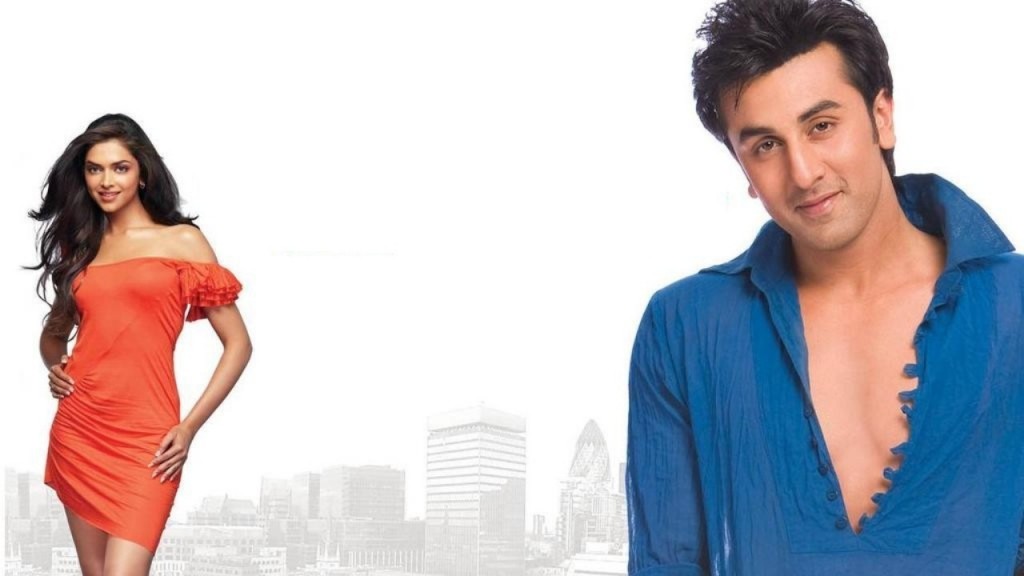Bachna Ae Haseeno has exactly two reasons to watch it – Ranbir Kapoor and Deepika Padukone. There is no doubt the two are the stars of tomorrow. But apart from them, the film has nothing really going for it. In fact, it is nothing but a superficial, candy floss film without any depth.
The film follows Raj (Ranbir Kapoor) and explores his love stories with three different women – Mahi (Minissha Lamba), Radhika (Bipasha Basu) and Gayatri (Deepika Padukone). He behaves like a cad with Mahi, a romantic dreamer, and Radhika, a wannabe actress, and uses and ditches them but falls in love with Gayatri. When she rejects his marriage proposal and he is totally shattered, he realizes how much he’s hurt the other two women and decides to meet them to make amends…
Bachna Ae Haseeno suffers from its inconsistent and weak screenplay. The tracks of Ranbir and Minissha and Ranbir and Bipasha as he breaks their hearts are totally umimaginative and insipid devoid of any moments whatsoever. The only relationship that seems somewhat well worked out and plotted with some thought is the one between Deepika and him. Their sequences be it in the cab she drives or at the supermarket where she works or at the party give the film some of its better though not memorable moments. But otherwise the cards are laid out too early in the screenplay as it unfolds thus making the film highly predictable. Too many references to older Yashraj hits is another irritant.
The second half where Ranbir decides to seek forgiveness from Minissha and Bipasha for hurting them is where the film is at its weakest. The situation of a man meeting up years later with women he has used and ditched to ask their forgiveness is potentially interesting but maybe too complex and difficult for director Siddharth Anand to handle maturely. After all, Ranbir returns to them because he has matured as a person but one would not think so from the treatment of these scenes. In particular, the Bipasha Basu angle as she makes Ranbir her PA and subjects him to all sorts of humiliation is woeful and ludicrous. There is no proper build up leading to her forgiving him. It is as if the director, Siddharth Anand, has kept a stop watch ready and when he feels her time in the film is up, he has her forgiving him. Even the Deepika track is hurriedly and abruptly wound up making Deepika’s change of heart totally unconvincing and thus denying the film any chance to build up to a satisfying climax. In fact, the film, in spite of its happy ending (but naturally), ends rather limply.
On the positive side, Ranbir Kapoor is undoubtedly the life and soul of the film. Hindi cinema should rejoice it has found a brilliant young new star who proves a worthy addition to artists from the Kapoor Khandaan. He is confident, likeable and what’s more totally at home be it comic, serious or romantic scenes. He seems to be developing his own style and identity but what he needs now are better films to really take off. Of the three women it is Deepika Padukone who comes off best. Possibly because she is the most real of all the three women and the one who has a clear mind of her own. Deepika shows poise and looks assured and comfortable in front of the camera. Minissha Lamba and Bipasha suffer from badly sketched roles and Minissha in particular is photographed terribly in the film besides appearing the total bimbette. Also, she and Ranbir look far too old for the teenagers they are supposed to be playing in 1996 and have no chemistry together whatsoever. Kunal Kapoor is adequate in his special appearance while Hiten Paintal hams it up as Ranbir’s buddy. Rishi Kapoor – Paintal they ain’t.
Technically, the camerawork is so-so. Though the film is mounted on a lavish scale, the locales be it Italy, Australia, Mumbai or Amritsar seem under utilised. Musically, Khuda Jaane Ki Main Fida Hoon is the best composed tune and a good one at that. Unfortunately, it gets frittered away in being shot too much like a music video rather then concentrate on Ranbir and Deepika’s feelings. Lucky Boy too is a catchy enough tune and could have been picturised far more imaginatively. In the final analysis, however,there is nothing like yesteryear film music and in that sense Bachna Ae Haseeno from Hum Kisise Kum Nahin (1977) still forms the best track in the film. The sound design is loud and obvious as is the background score with some cheap use of the toilet flush in the name of humour. The sequences when Ranbir goes back to Bipasha could have trimmed as this section of the film seems much too long.
All in all, the film is watchable solely for Ranbir Kapoor and Deepika Padukone. And that’s about it.
Hindi, Romance, Drama, Color


